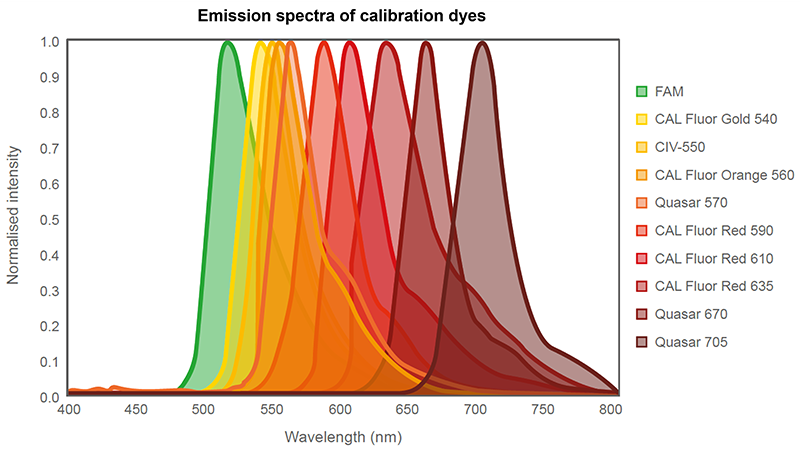CAL Fluor™ and Quasar™ dye calibration standards are available to improve signal deconvolution in real-time qPCR thermal cyclers that require spectral calibration. They enable the instrument to store the fluorescent profile of each dye and control for crosstalk. Crosstalk is the bleed-through of signal into adjacent filter-sets that are oriented to detect other fluorophores. This crosstalk is particularly consequential to a multiplexed assay, since multiple targets are amplified simultaneously but detected independently. Different fluorescent reporters are used to signal each target and so calibration with dye standards allows the instrument to resolve their overlapping spectra.
Dye calibration standards are formulated with the fluorophore covalently attached to an oligo-dT (10-mer), to better mimic the signal from a fluorescent probe. Using the dye calibration as a reference, the analysis software anticipates how much fluorescence to expect from each fluorophore during amplification, and will subtract out signal from inappropriate filter-sets. Calibration with the T10-dye standards therefore reduces the magnitude of crosstalk.
CAL Fluor and Quasar dye standards span a wide range of emission wavelengths for maximum flexibility in experimental design. Please find instructions on spectral calibration here for a number of common instruments. On certain instruments, all dyes that will be multiplexed together must be calibrated together, and so a FAM standard is available as well. Please inquire with techsupport@biosearchtech.com to discuss the custom synthesis of any dye not currently available as a calibration standard, or if you have any questions on the calibration procedure.

